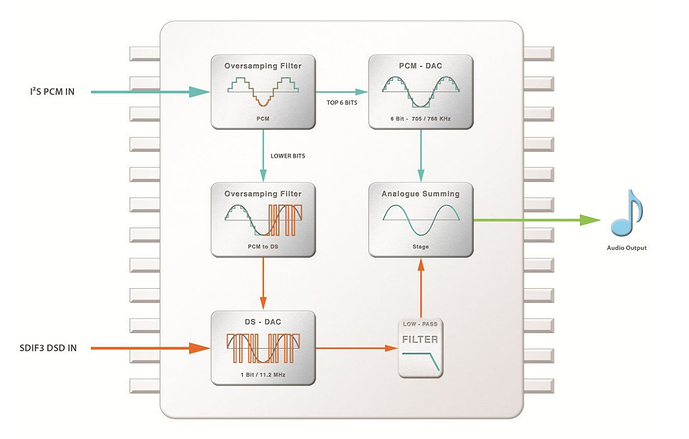I’ve used T+A mostly with headphones and Holo Spring mostly with speakers, so it’s difficult to directly compare. I like them both a lot. I have spent more time with the T+A since it drove my headphones for a while. The Spring is more difficult for me to integrate day-to-day because it lacks a volume control.
Also, I have the base model Spring, not the “tuned” version that most people seem to be buying.
The T+A is more polished product. It has more built-in functionality, a volume control and a good headphone amp (unless you have big power requirements). It sounds markedly different playing DSD vs PCM–and I like the DSD sound better.
The Spring is a “blank slate”. It’s great for playing with DSP because of its NOS modes, i2s input, better linux support (at least for now), etc. If you like tweaking around with all of the different stuff in the system, it provides more opportunities.
To my ears, the Spring sounds like a ladder DAC. The T+A feels slightly more precise. I don’t find one to be head and shoulders above the other…just different sounds. Really, different products for different kinds of people.
Jitter is not an artifact created by upsampling, and is not transmissible from core->DAC unless you are using a mechanism that mixes clock reference + data like S/PDIF. With S/PDIF and things like it, reclocking helps.
This conversation totally concerns what’s happening inside of the DAC.
DACs have a clock generator that typically runs at a very high rate (in the iFi DAC we were talking about, it has two, one clock that pulses 44100*512 pulses/sec, and one at 48000x512 pulses/sec).
These clocks determine the timing when individual samples are rendered into sound. Jitter is the timing error in those pulses. This is essentially random. On average the clock will keep time at the stated rate more or less, but individual pulses can be positioned +/- a certain amount depending on the accuracy of the clock.
Lets say you’re running the DAC at the DSD512 sample rate–that happens to exactly match the 44100*512 clock in the iDAC2. So one clock pulse = one sample. Each pulse’s error amount directly translates influences the temporal position of one audio sample.
But lets say, you’re running the DAC at 44.1kHz–the DAC is going to use the same clock, but only look at every 512th pulse. The expected timing error in these “divided” pulses is 512x smaller relative to the sample rate (and that’s what matters here). So the samples are positioned more accurately, and there is less jitter.
Most DACs (oversampling DACs) render their output at the same rate all the time, so they are seeing the same behavior with respect to jitter regardless of the source material.
Other DACs (NOS or non-oversampling DACs) match their sample rate to the source material, and might experience less jitter-related artifacts at lower sampling rates than at higher sampling rates. This discussion is really about these.

